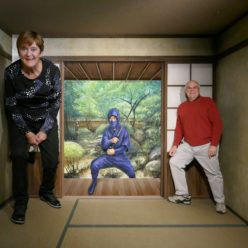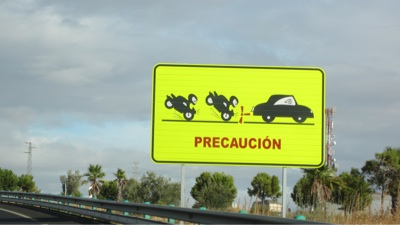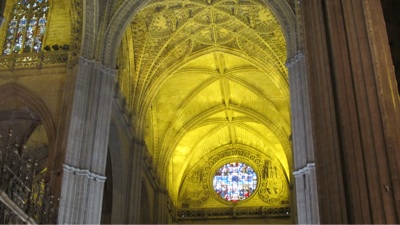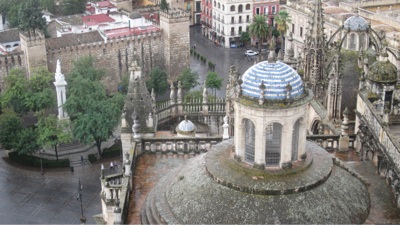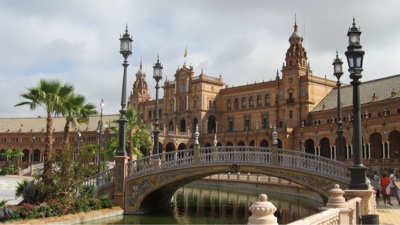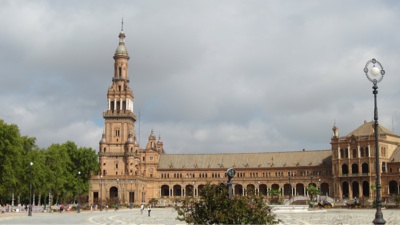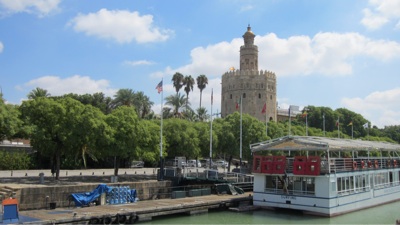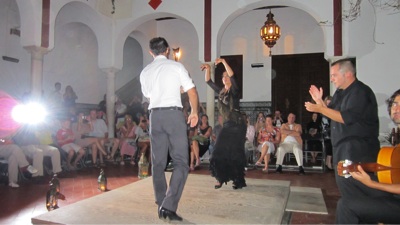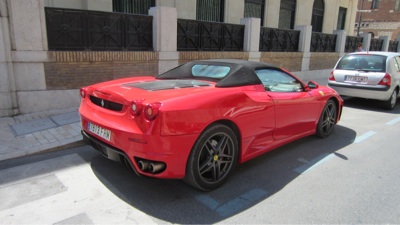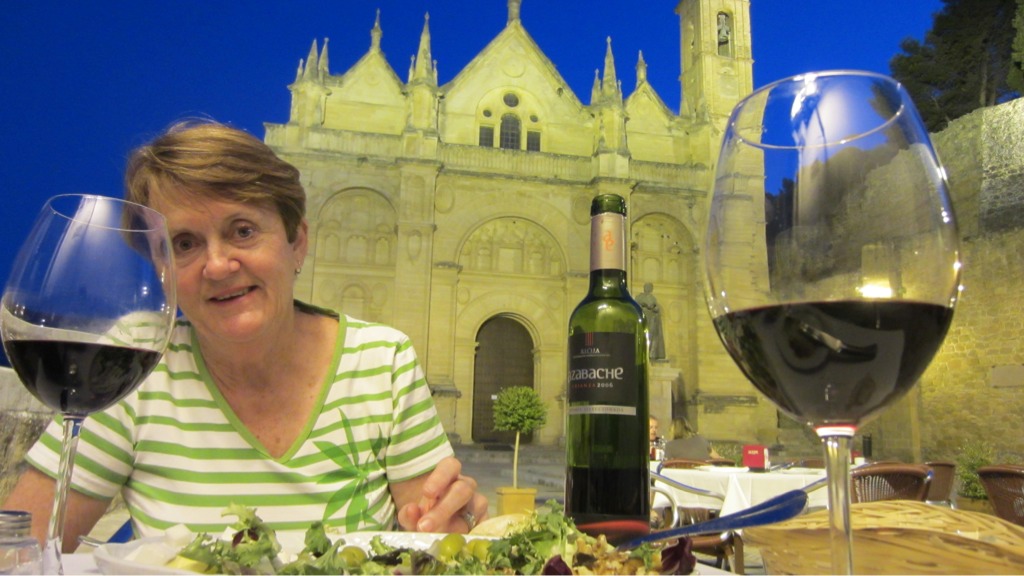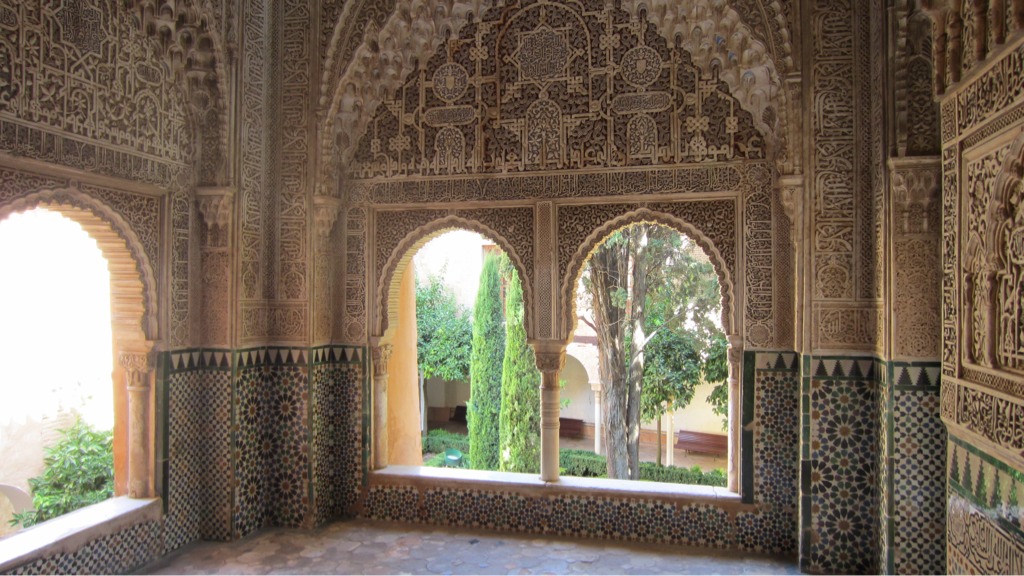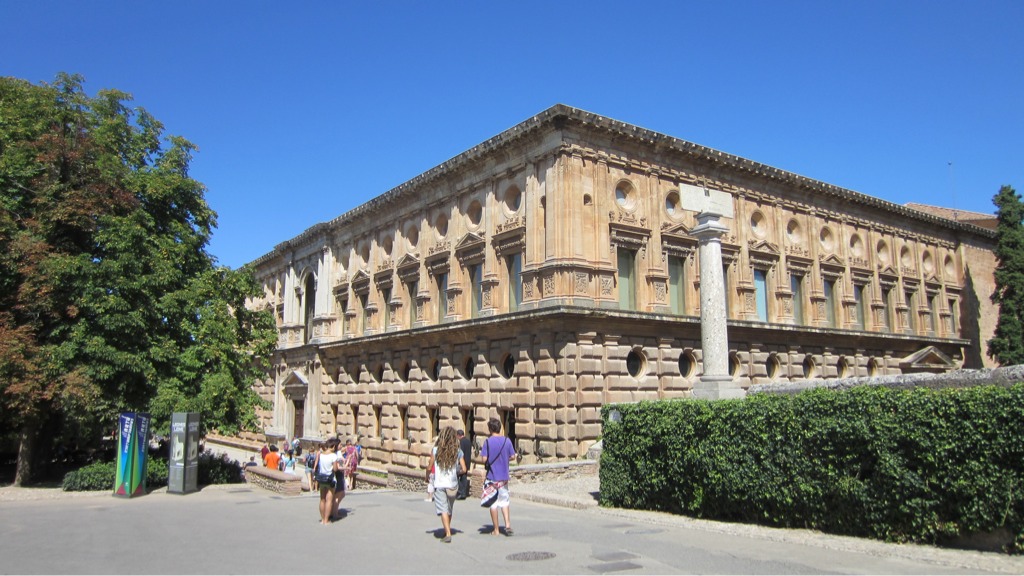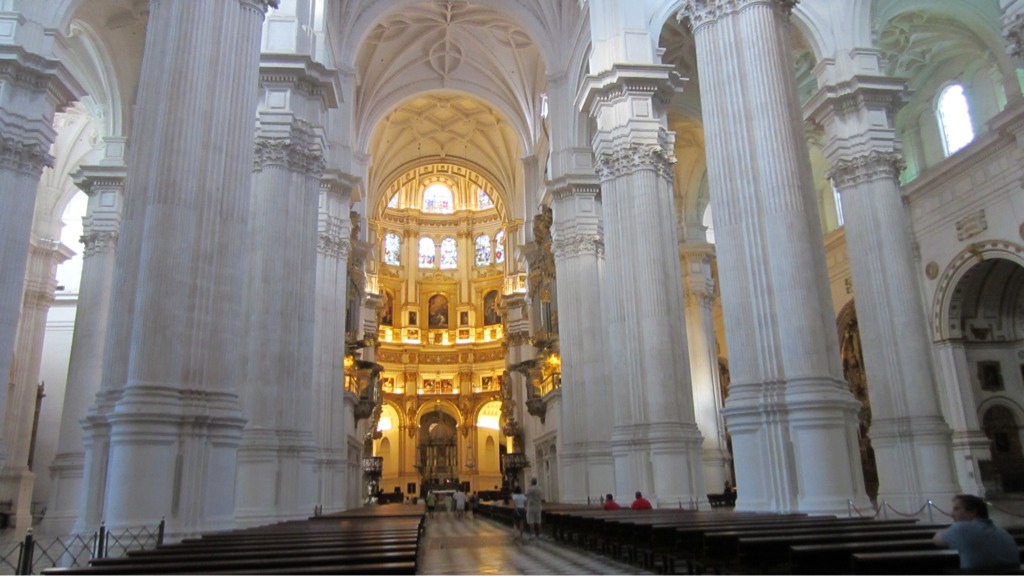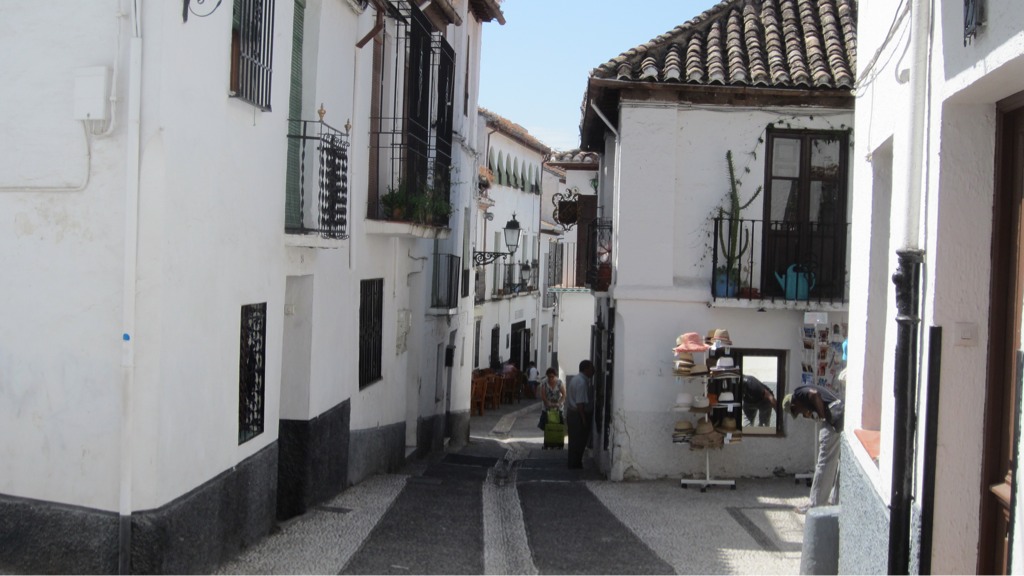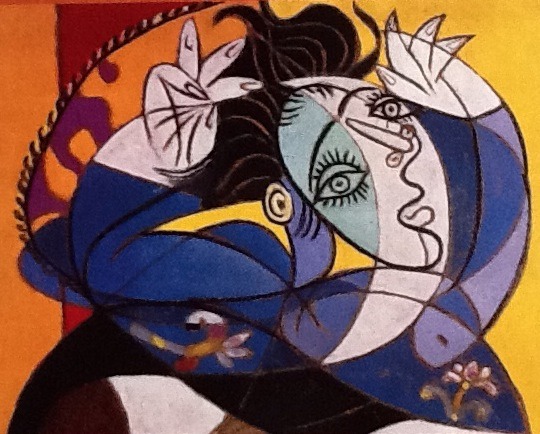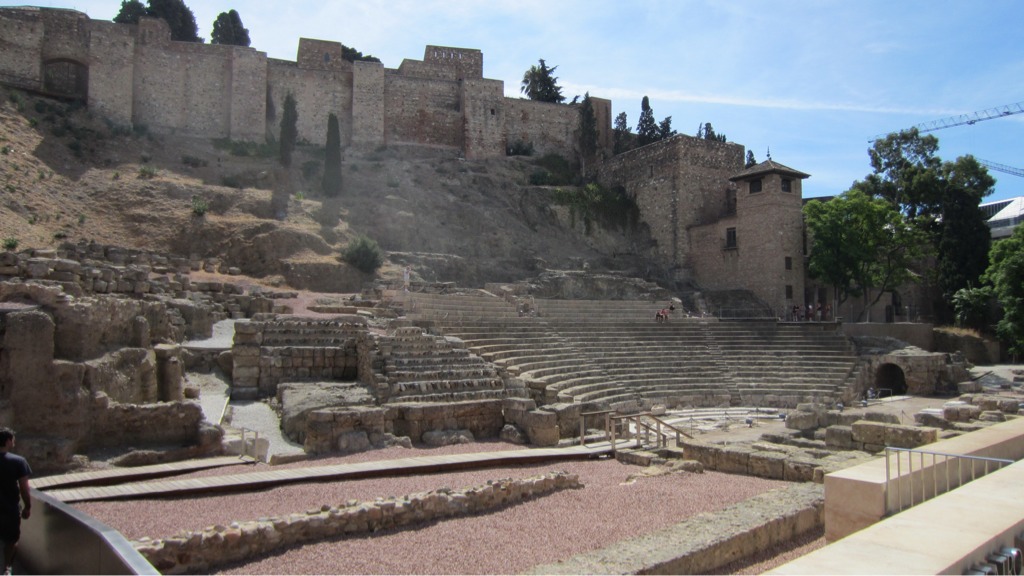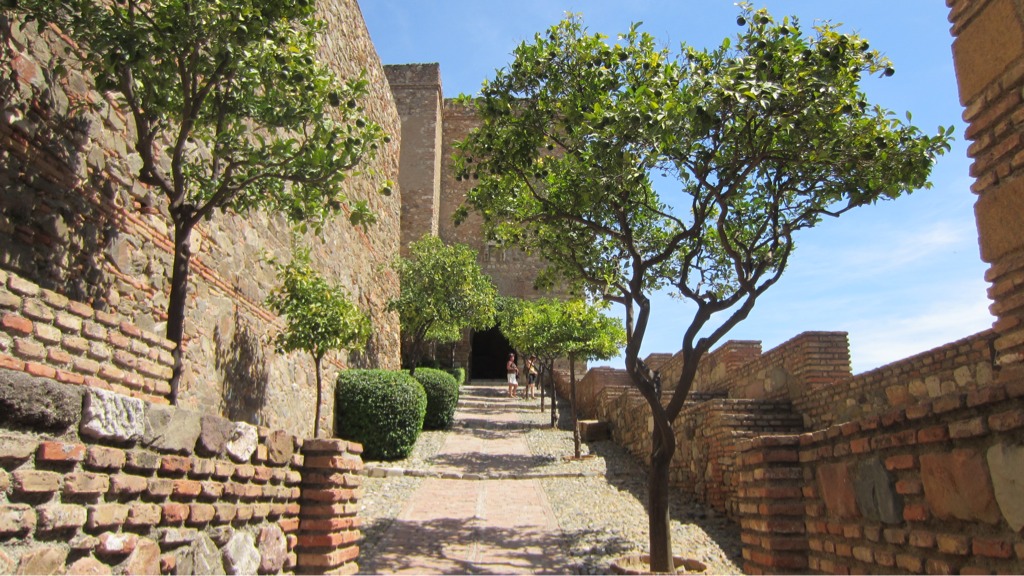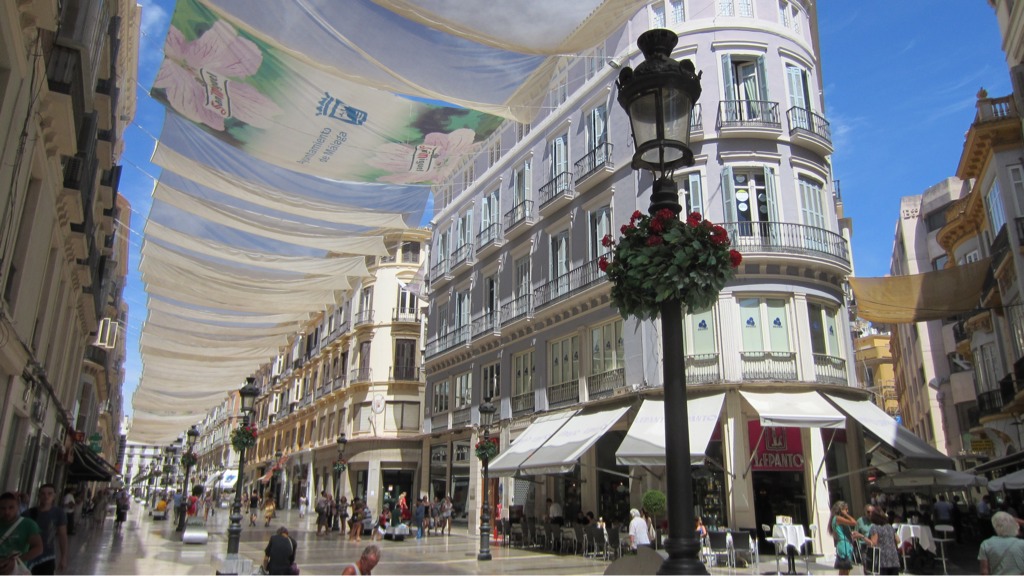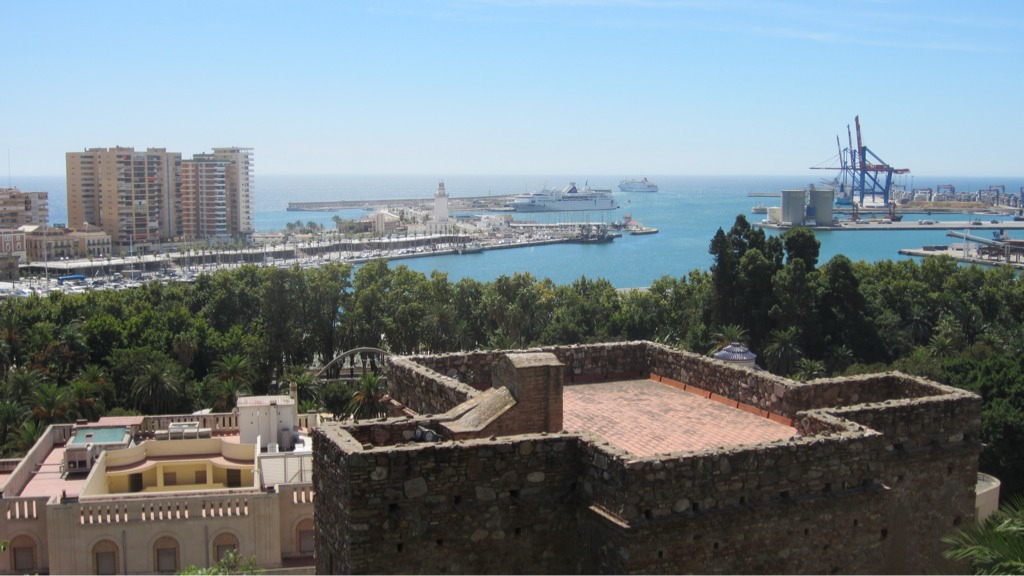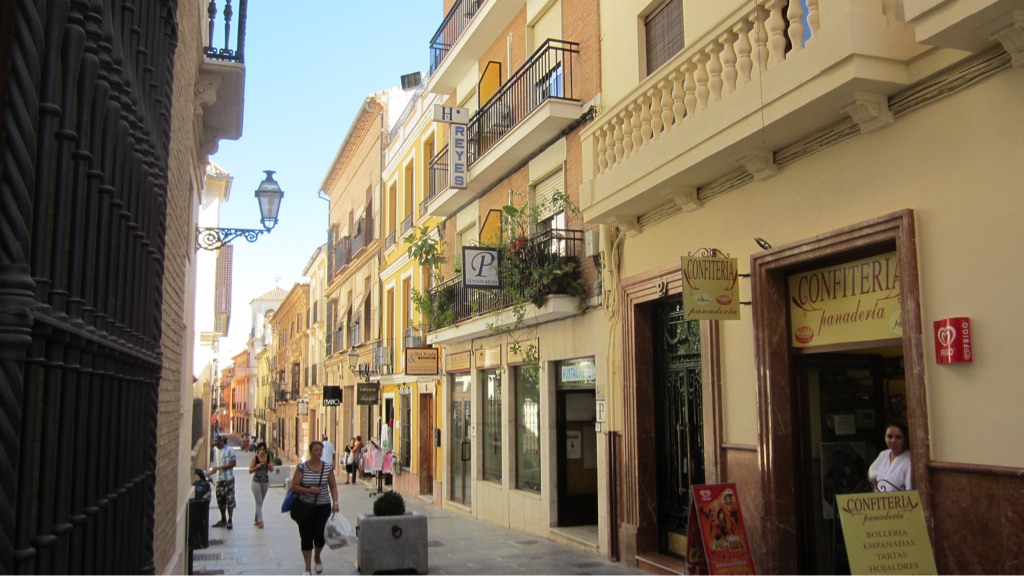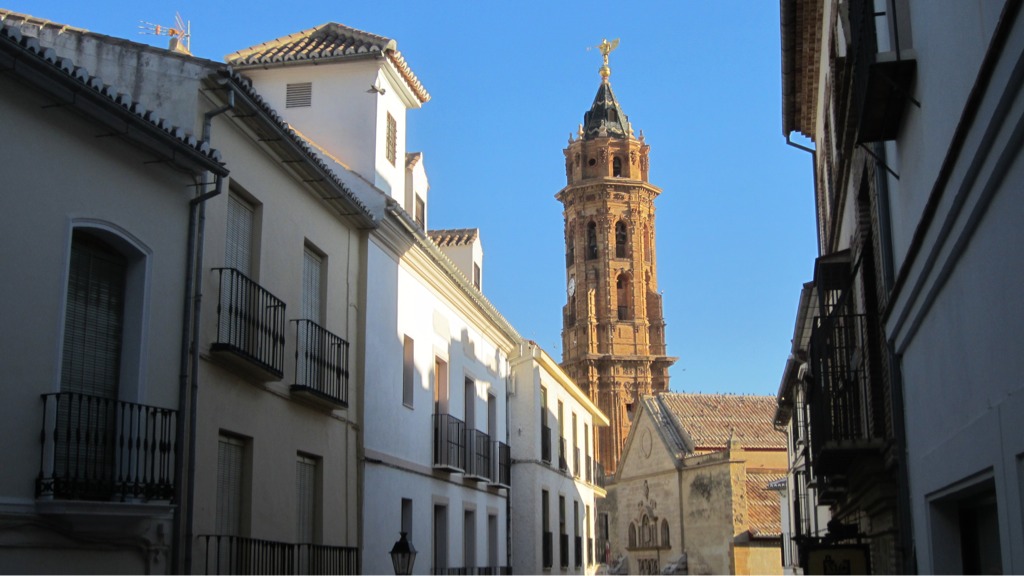Madrid, Capital Of Spain …
We checked out of our hotel in Seville on Sunday morning and walked across to Santa Justa Station for our trip to Madrid on the AVE high speed train. A fantastic trip in absolute luxury being continually served refreshments and breakfast during the course of the 2 1/2 hour journey. We arrived in Madrid Atoche Railway Station at 11:15 AM and within 30 minutes were checked in at our hotel. Our studio apartment hotel is located in the exclusive suburb of Salamanca adjacent to Retiro Park and close to the Retiro Metro Station.
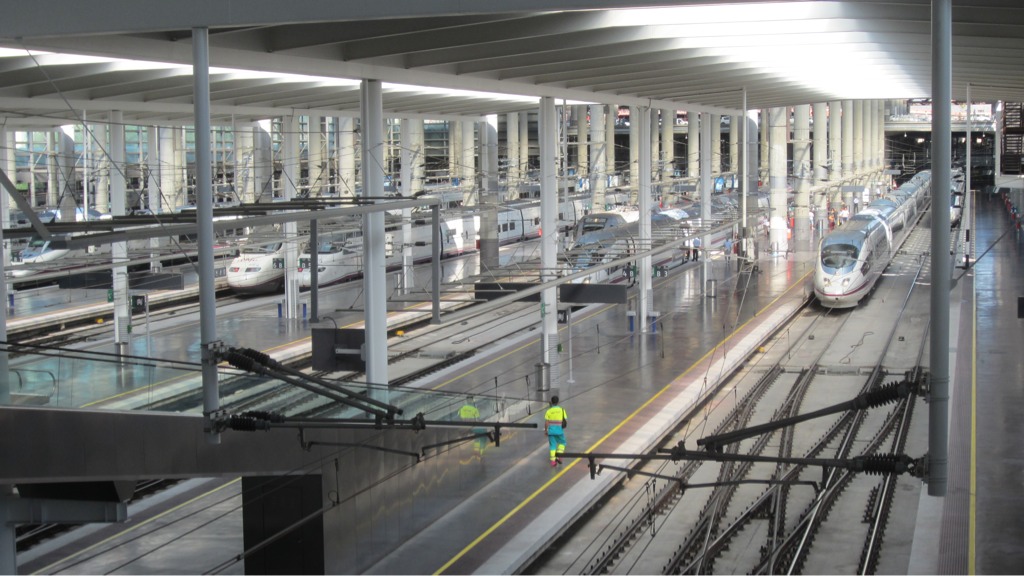
The amazing Atoche Railway Station in Madrid
We were lucky enough to arrive in Madrid on Sunday as it is a real family day and a fun place to be. We walked from our hotel up to Plaza Mayor and then by Metro back to Retiro Park. Families were everywhere enjoying the fine weather and the continuous array of street entertainers which were great fun. At the end of this post is a video of this ugly baby.
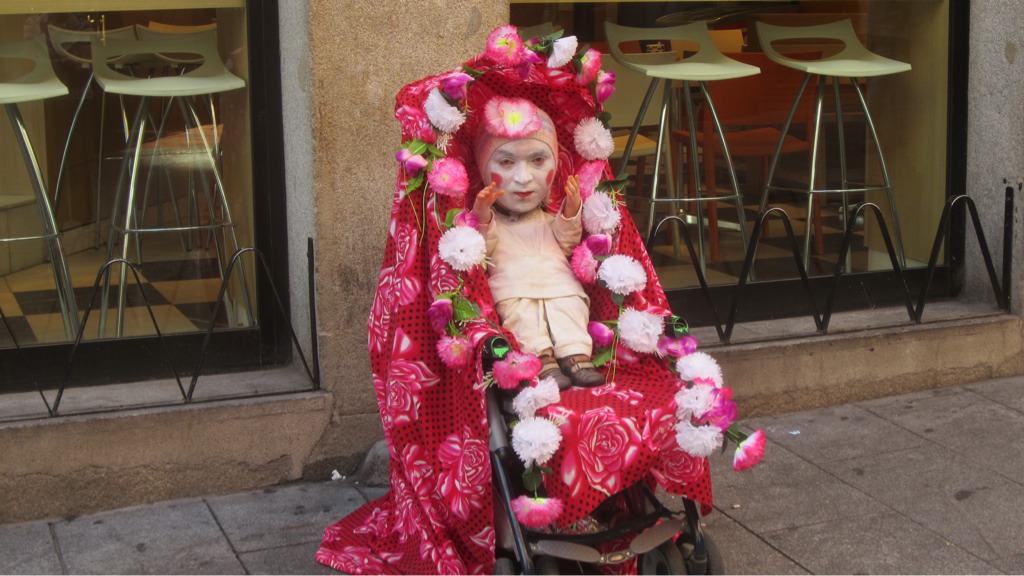
One of the many street entertainers
In the Palacio de Velazquez in Retiro Park there was an art exhibition by artist Leon Golub which we took the opportunity to visit. It was very confronting as he depicts images of war and conflict in a very dramatic way. The painting shown below was about 10 meters long and 2 meters high and depicted conflict during the Vietnam war.

Painting by Leon Golub depicting Vietnam War
A Little More Culture …
Following an early breakfast on Monday we visited the Reina Sofia Museum which is devoted to modern and contempory art, particularly Spanish artists. It features work from Picasso, Juan Gris and Dali. One of the most famous paintings in the collection at Reina Sofia is Picasso’s “Guernica” which is an extremely complicated and confronting masterpeice. Also displayed is many of Dali’s works that really extend the mind, the most famous probably being “The Masturbator” which attracted a lot of attention.
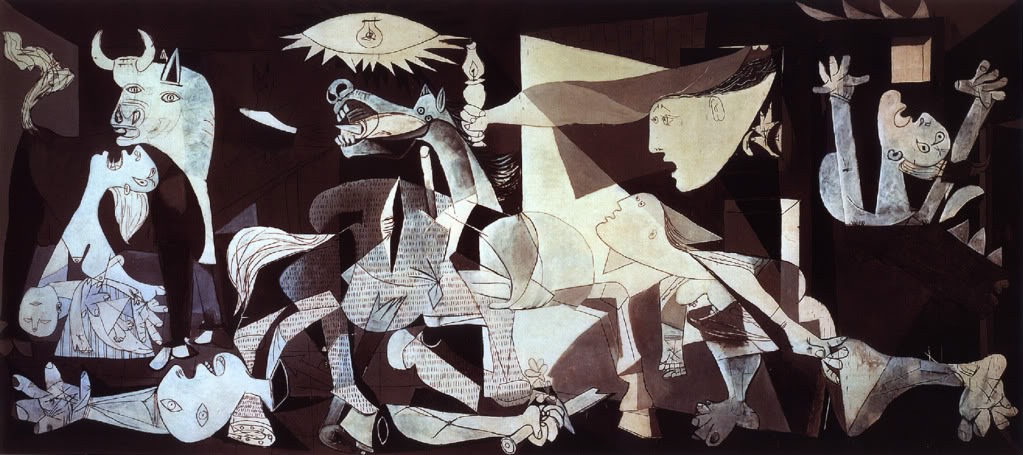
Picasso’s “Guernica” in the Reina Sofia Museum
A Walk Around Madrid
Following our visit to Reina Sofia we walked around many of the streets in the old section of Madrid. Retail shops, restaurants and tourist shops are a plenty in this section of town which stems out from both the Plaza Mayor and Puerta del Sol. We enjoyed lunch at the Museum of Jamon (Ham), a unique restaurant where you stand at a counter with many other diners and order a variety of ham rolls and beer or wine. A really fun experience in Madrid and very popular on weekends.
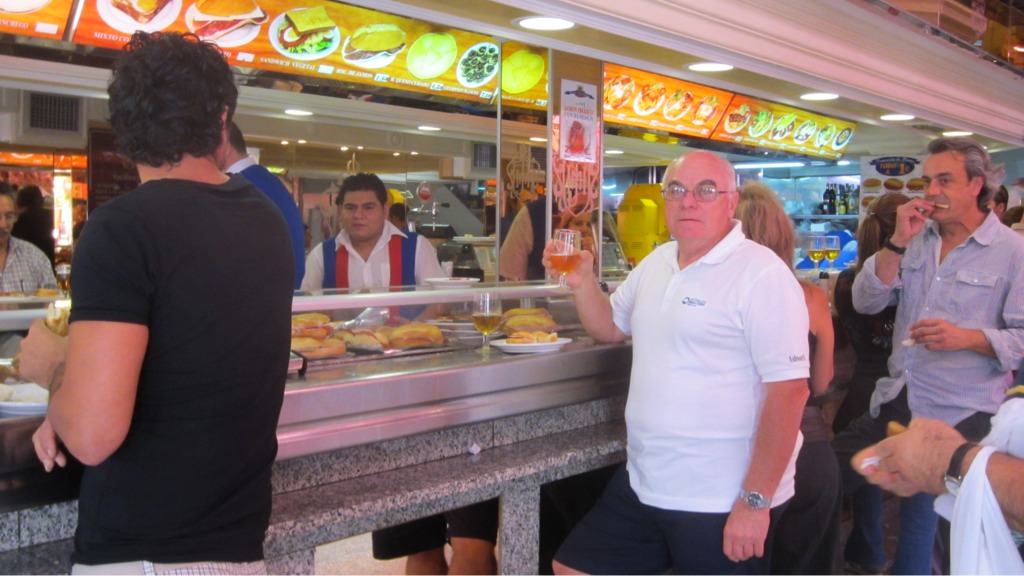
Rob enjoying lunch at the Museum of Jamon
Off To The Palacio Real …
Our main activity on Tuesday was a visit to the Royal Palace of Madrid, the residency of the King of Spain, but now only used for state ceremonies. This Palace stands on the site of the former Alcazar(Fortress) of Madrid which was destroyed by fire. The Baroque style building contains hundreds of rooms with amazing decoration which varies considerably depending on the desires of the resident King. It also features an armoury featuring weapons and armour from the 15th and 16th century.
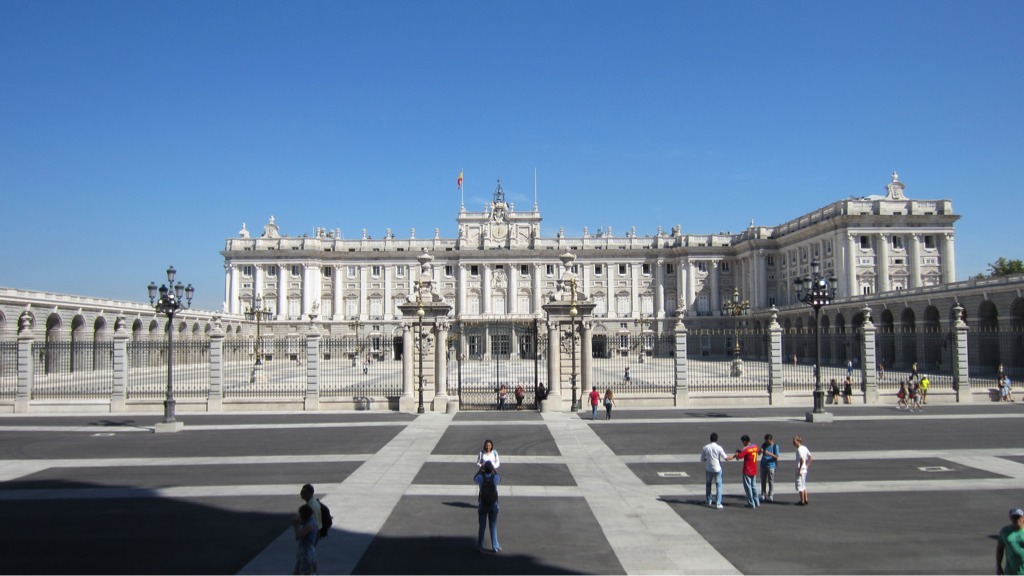
Palace of Madrid
Time For Lunch …
From the Palace we walked down to Plaza Mayor and just behind this plaza is a unique market called “Mercado de San Miguel” which is a market just for lunch and dinner. The market is over 100 years old and was reopened in1999 as a food hall with independant stall holders selling a wide variety of Spanish delicacies. If you are in Madrid do not miss this dining experience, all at very reasonable prices.
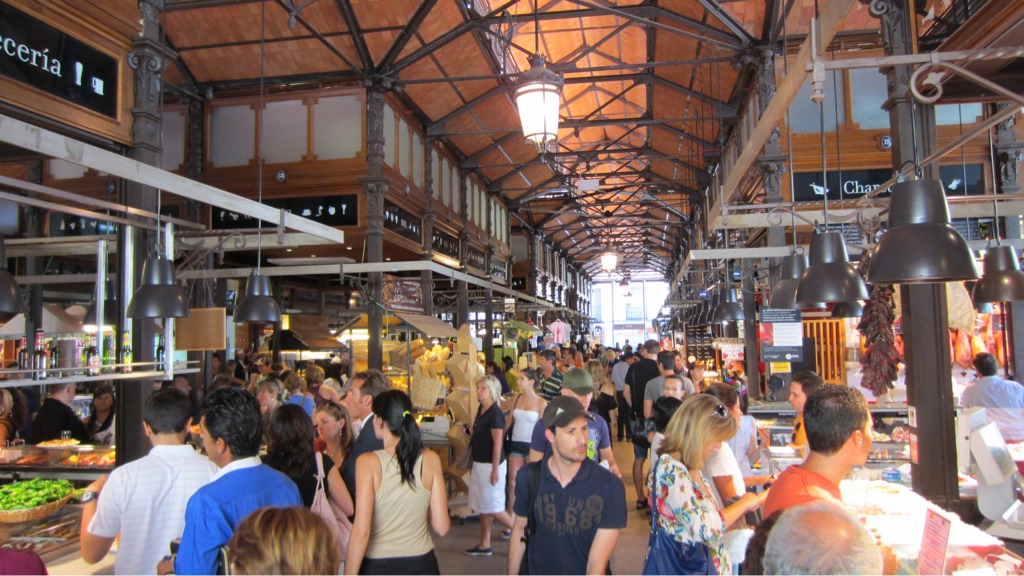
Mercado de San Miguel – A great place for a casual lunch
Museo Nacional del Prado
The Prado Museum was opened in 1819 making it one of the oldest public art museums in the world. This magnificent building houses 21,000 works of art from the 12th to the 19th century. We spent 5 hours in the museum and only managed to see a small fraction of the works but did manage all of the Masterpieces.
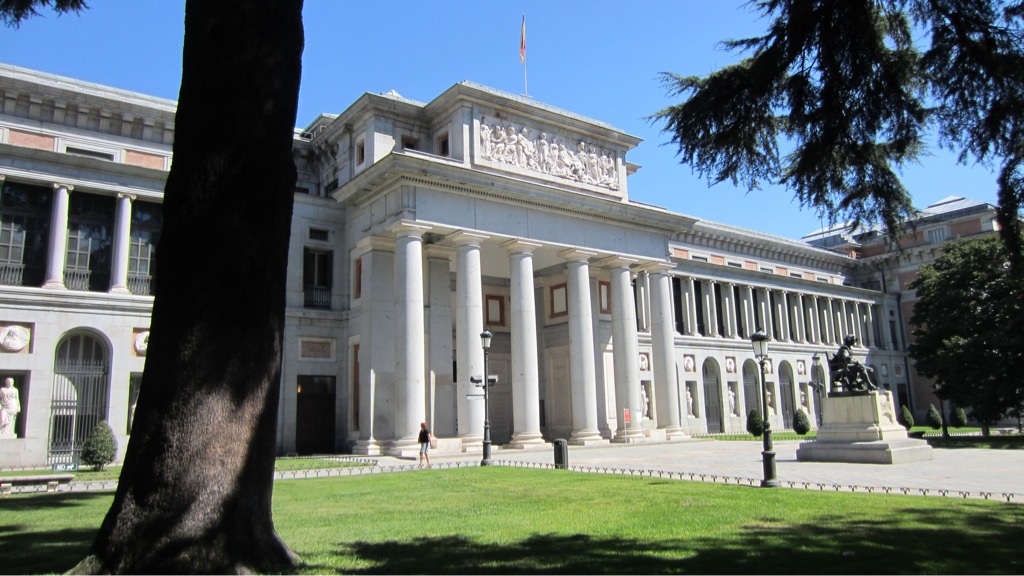
The Magnificent Prado Museum
An Intriguing Painting …
One of the paintings that really intrigued us was called “The Family of Felipe IV” by Diego Velazquez. It is interesting because the artist himself is in the painting and appears to be looking at the subjects of his painting which are reflected in the mirror at the back of the room. It is considered the artists greatest masterpiece and the principal work in the Prado’s collection. The infant Margarita is the centrepiece of the picture and is the daughter of Felipe IV. On either sides of her are maids of honour and a female dwarf.
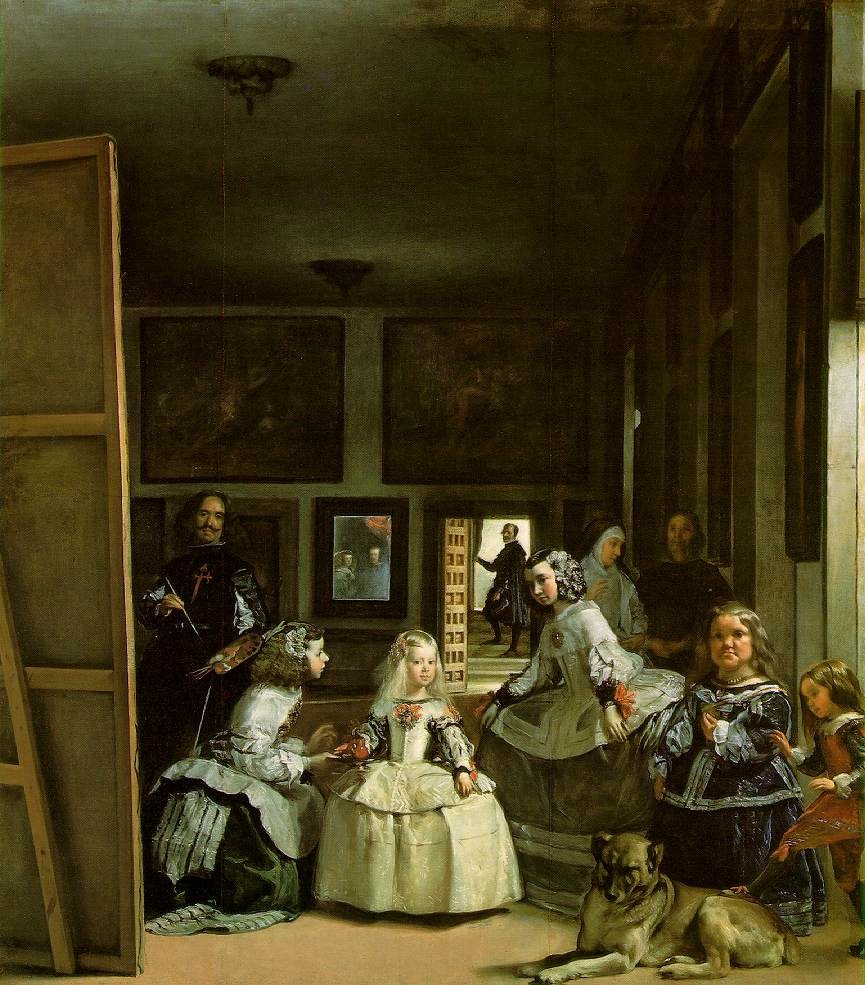
“The Family of Felipe IV” by Diego Velazquez
Our Final Day …
On our last day in Madrid we took a bus trip to Avila and Segovia. Avila, located about 100 km from Madrid is a world heritage site made famous by the best preserved 2.5 km long fortified wall in all of Spain. Built in the 12th century, the wall has 90 towers and 9 entry gates.
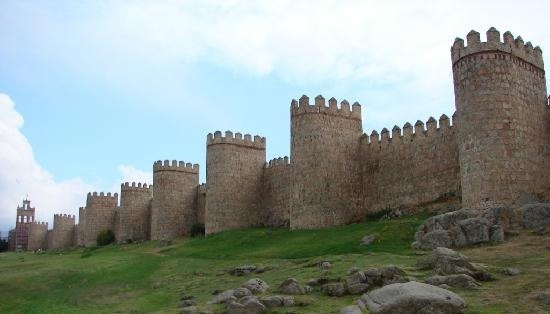
Avila fortified wall
On To Segovia
Segovia is another world heritage listed city as it was an important Roman military site and boasts a well preserved magnificent Roman adqueduct nearly 1 km long. This aqueduct transferred water from the nearby river to the middle of the town. In the Plaza del Azoguejo the arches reach 30 meters in height.
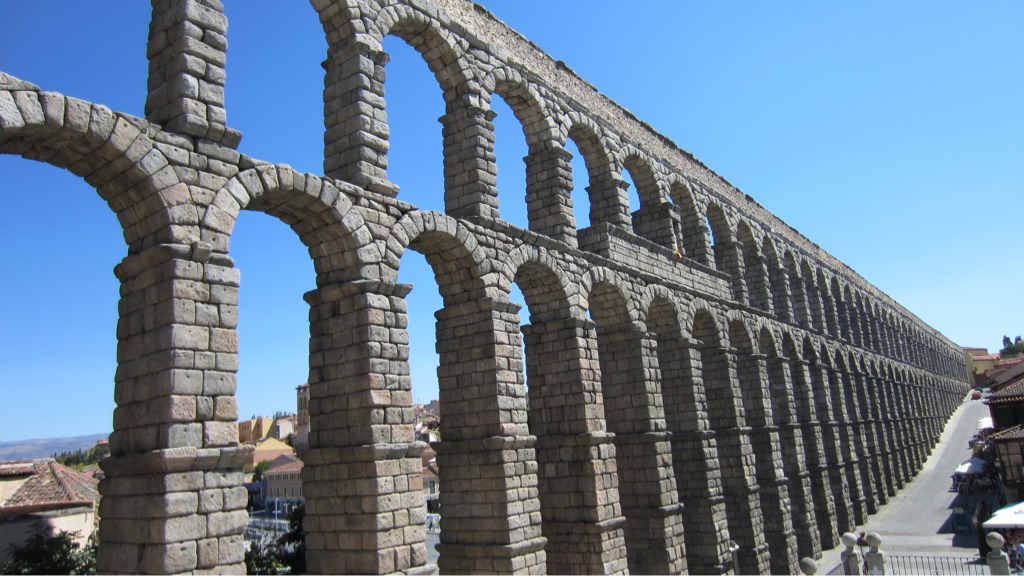
The Roman aqueduct in Segovia
The Segovia Alcazar (Segovia Castle) is also impressive. Perched on a rocky ourcrop at the end of the old town the Alcázar was originally built as a fortress but has served as a royal palace, a state prison, a Royal Artillery College and a military academy since then.
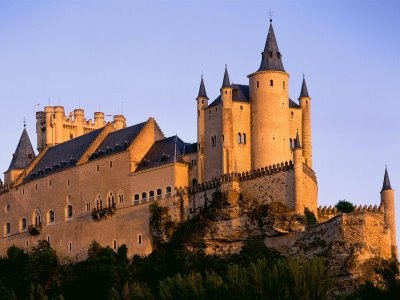
Segovia Castle or Alcazar
Our Departure From Madrid …
After 5 days in Madrid, it was time to catch the train to Salamanca which left from Charmatin Station. It turned out to be a Public Holiday in Madrid so a good day to leave the Capital of Spain. Madrid is a great city and we would recommend anyone planning a trip to Spain to visit this beautiful city. It is easy to get around with a clean and efficient metro system, it is a safe city with a high police presence, it has magnificent buildings and excellent world class museums.
Some Humour To Finish This Post
As mentioned earlier in this post there are a large number of very entertaining street performers in Madrid, many of which are very talented. We thought the following was very humorous and watched him for a considerable time.
– Posted using BlogPress from my iPad
Location:Madrid, Spain
